Walking through Ravenna feels like stepping into a living museum where the Byzantine Empire left its most dazzling mark. The city’s mosaic-adorned buildings shine with a golden splendor that has survived for fifteen centuries. Ravenna boasts the most beautiful and well-preserved Byzantine mosaics in the world.
During my exploration, I discovered that what makes Ravenna truly special is how accessible these artistic treasures are. Unlike other ancient sites where you might see fragments behind glass, here the entire walls and ceilings glitter with intricate mosaic work. The Basilica of San Vitale particularly amazed me with its golden mosaic program. It is perhaps the finest example of Byzantine art that still exists today.
The city feels like a secret that travelers to Italy often miss, despite housing eight UNESCO World Heritage sites. As I wandered between these magnificent buildings, I realized that Ravenna offers something truly unique. It gives visitors a rare glimpse into the artistic heights of an empire that valued luxury and divine representation.
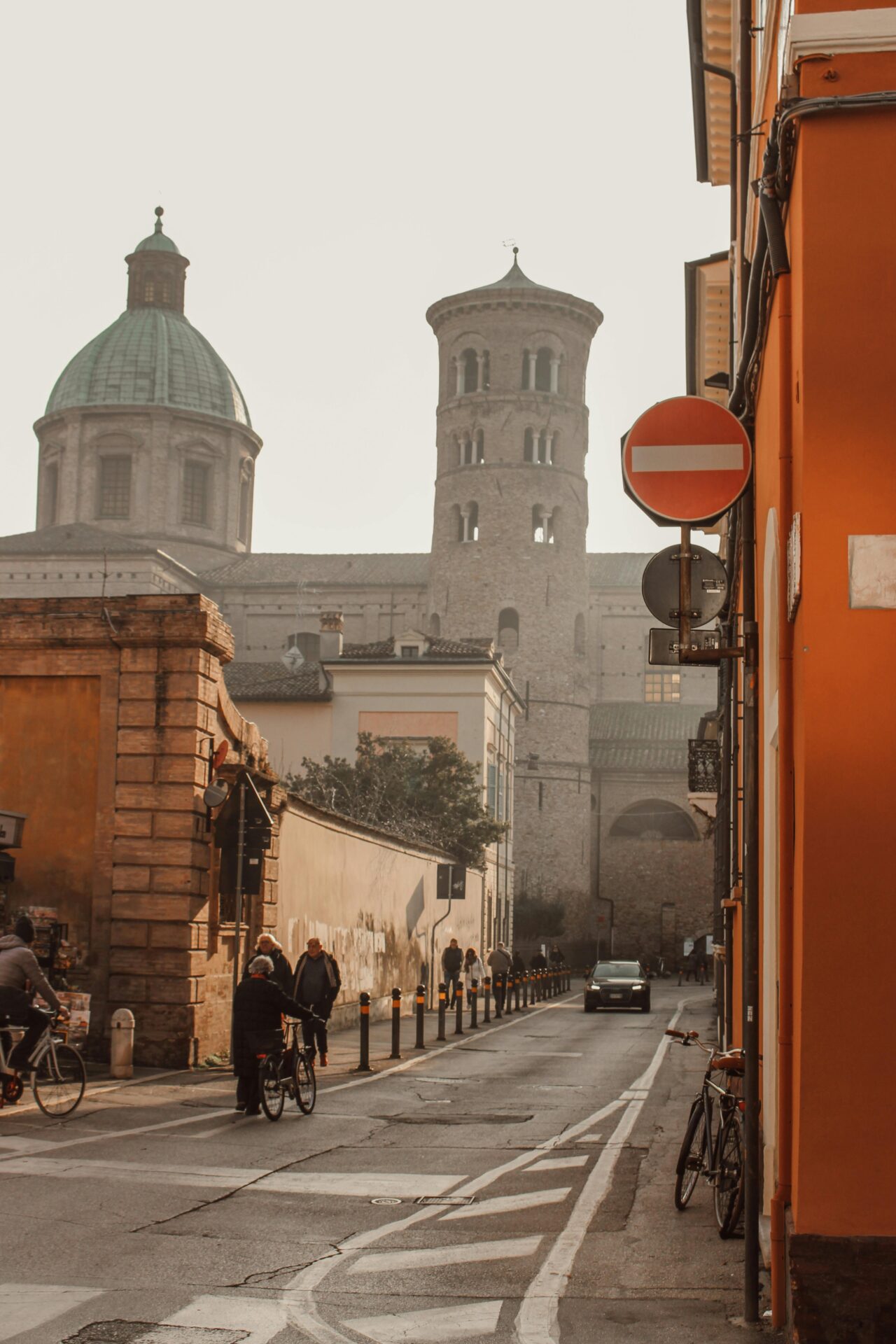
Decoding the Byzantine Empire
The Byzantine Empire stands as one of history’s most fascinating civilizations, blending Roman governance with Greek culture and Christian faith. Its legacy lives on most vividly through Ravenna’s magnificent mosaics that showcase imperial power, religious devotion, and artistic innovation.
The Rise and Influence of Justinian I
Emperor Justinian I transformed the Byzantine Empire during his rule from 527 to 565 CE. His vision to restore the glory of the Roman Empire led to military campaigns that briefly reclaimed territories in Italy, North Africa, and Spain. This explains why we find such spectacular Byzantine art in Ravenna today.
Justinian’s most lasting achievement was the codification of Roman law in the Corpus Juris Civilis, which forms the basis of many modern legal systems. His marriage to Theodora, a former actress who became his powerful co-ruler, created one of history’s most influential power couples.
The magnificent mosaics in San Vitale basilica show Justinian and Theodora in all their imperial splendor. These aren’t just pretty pictures—they’re visual propaganda designed to assert Byzantine authority in recently conquered territories.
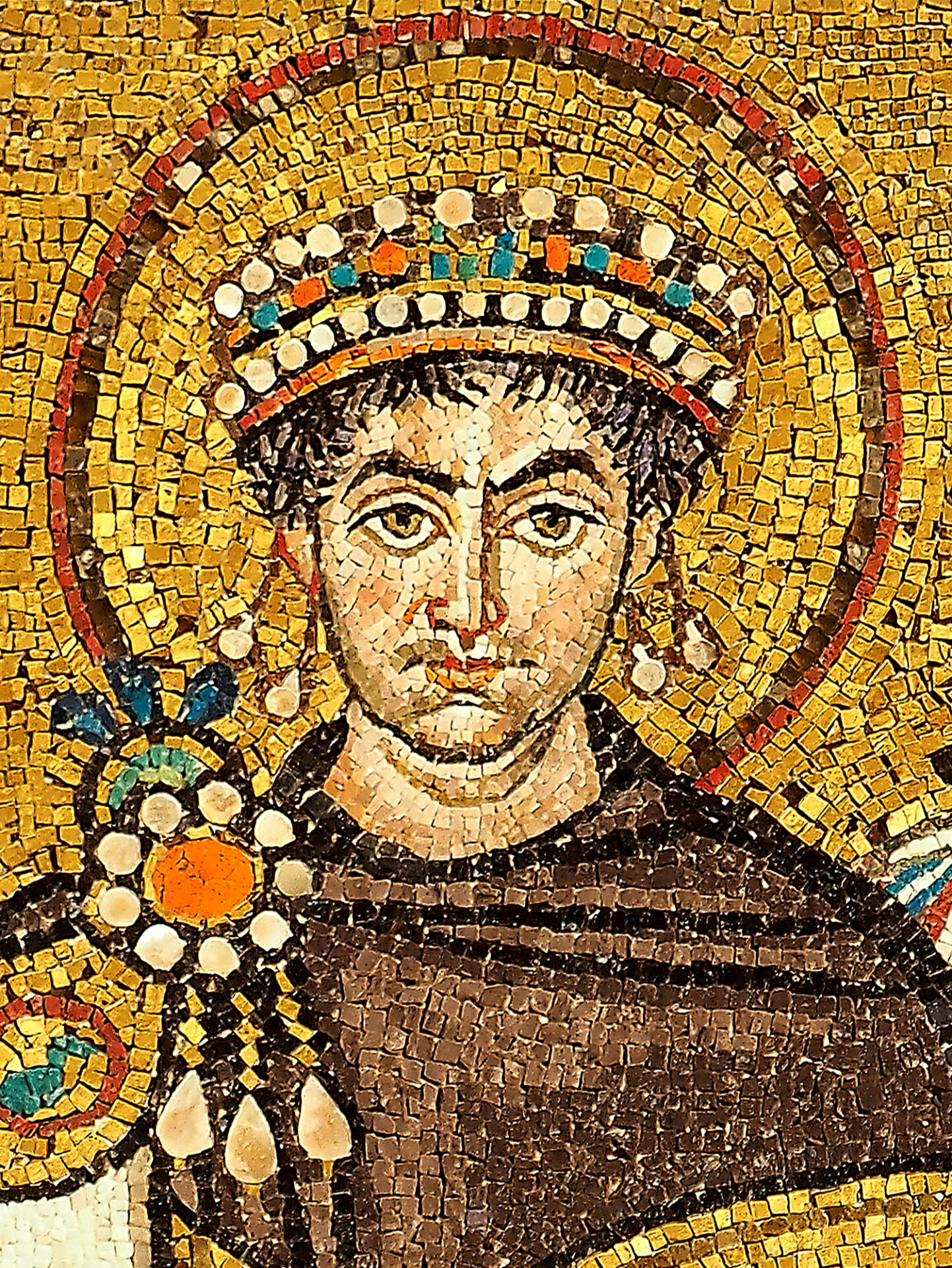
The Theological and Cultural Shifts
Byzantine culture blended Roman, Greek, and Eastern traditions with Christianity at its core. When visiting Ravenna’s churches, you’ll notice how religious imagery dominates the stunning mosaic work.
The empire experienced intense theological debates, particularly around the nature of Christ. These discussions might seem academic to us now, but they shaped Byzantine art in profound ways. The images you’ll see in Ravenna’s basilicas reflect specific theological positions that were hotly contested.
Greek replaced Latin as the empire’s official language during this period. This cultural shift is evident in the inscriptions found throughout Ravenna’s monuments. The Byzantine aesthetic favored gold backgrounds, formal compositions, and spiritual symbolism over naturalistic representation.
Art served both religious and political purposes. When I stand before these glittering walls, I’m witnessing not just beautiful decorations but powerful statements about divine and earthly authority.
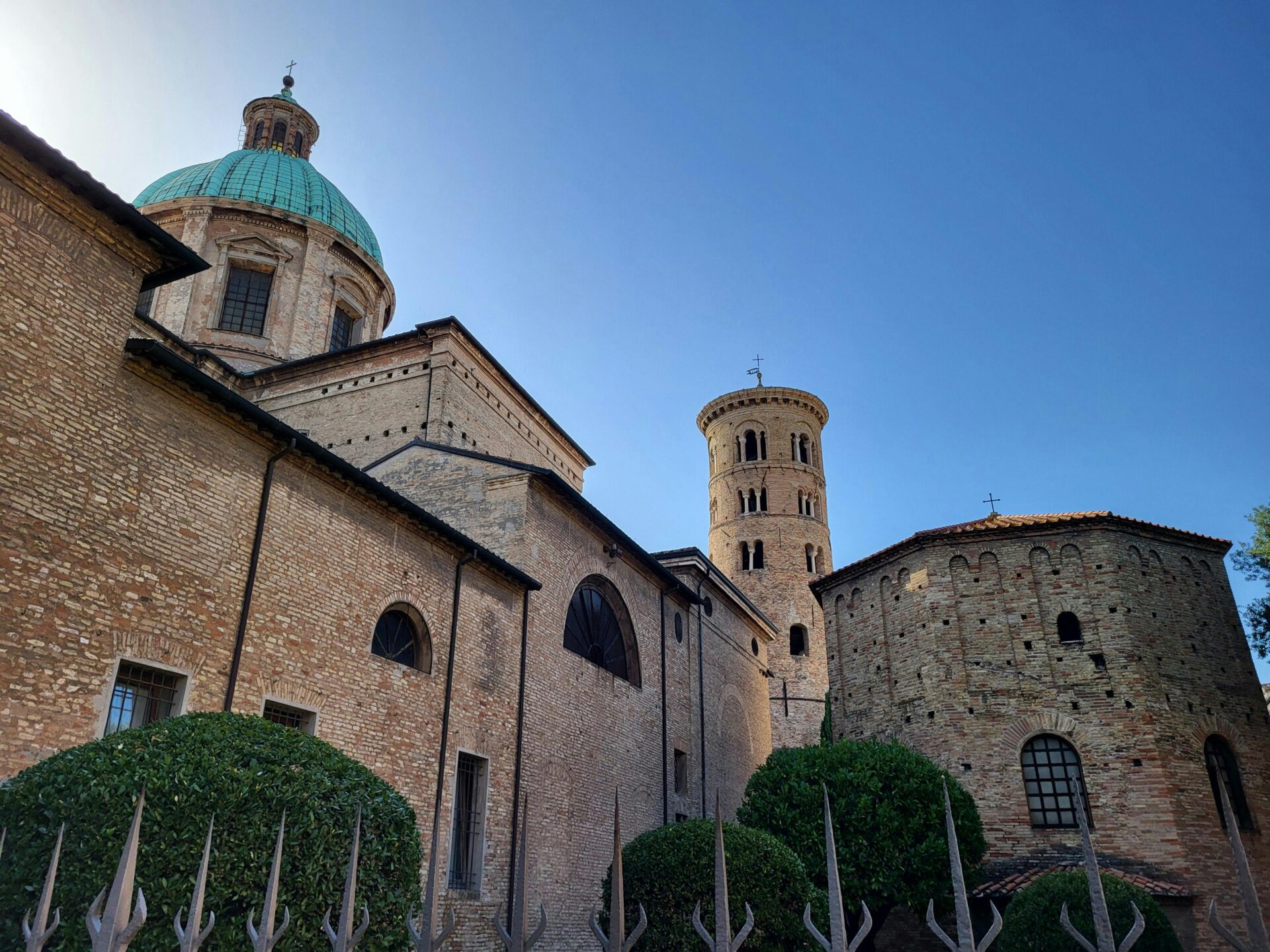
Diplomacy and Administration in the Eastern Empire
The Byzantine Empire survived for over a thousand years largely due to its sophisticated administrative system. Provincial governors, called exarchs, ruled territories like Ravenna with considerable autonomy while maintaining loyalty to Constantinople.
Byzantine diplomacy was legendarily complex. Officials preferred negotiation and strategic marriages over costly military campaigns whenever possible. They maintained elaborate networks of alliances with neighboring powers through trade agreements and cultural exchanges.
The empire developed a complex bureaucracy with specialized departments for different government functions. Civil servants underwent rigorous training and examinations. This administrative efficiency helped Byzantium survive countless external threats.
Trade networks stretched across the Mediterranean and beyond, bringing luxury goods like silk, spices, and ivory to Byzantine cities. These economic connections influenced the artistic styles you’ll see in Ravenna, where eastern and western elements blend seamlessly.
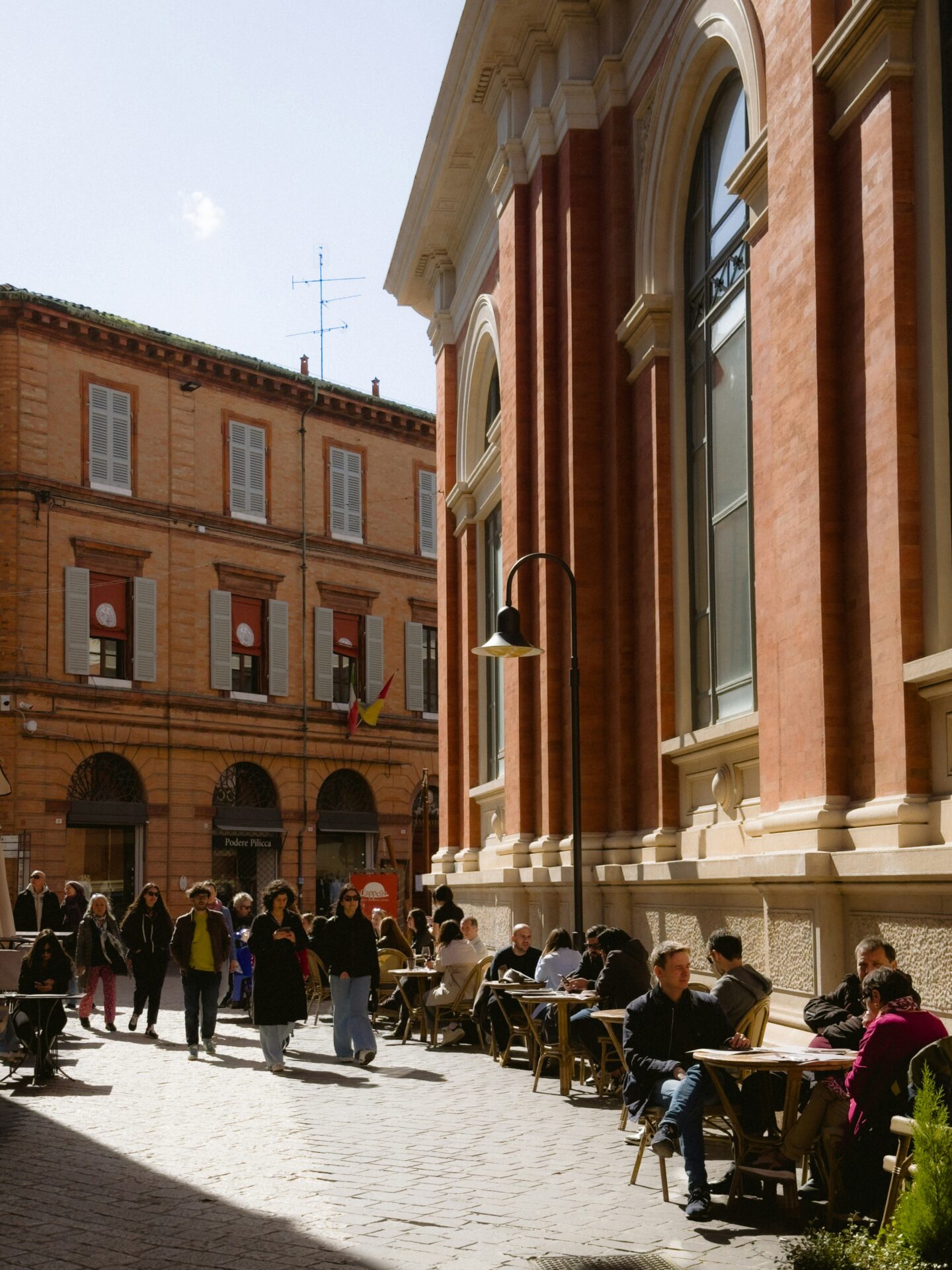
Essential Mosaics of Ravenna
Ravenna houses the most stunning Byzantine mosaics in the world, created between the 5th and 6th centuries. These dazzling artworks, recognized as UNESCO World Heritage sites, showcase the height of early Christian art with their golden backgrounds and vibrant colors.
Basilica of San Vitale’s Masterpieces
When I stepped into the octagonal Basilica of San Vitale, the 6th-century mosaics literally took my breath away. The ceiling’s starry patterns and rich colors create an otherworldly atmosphere that’s impossible to capture in photos.
The most impressive aspect is how the artists used tiny glass tesserae to create depth and dimension. Light plays across the surfaces, making figures seem to move as you walk around the basilica.
San Vitale’s mosaics represent the peak of Byzantine art in Italy. I was particularly struck by the apse decorations showing Christ enthroned with angels and saints. The technical skill involved is mind-boggling – thousands of tiny pieces perfectly placed to create these eternal masterpieces.
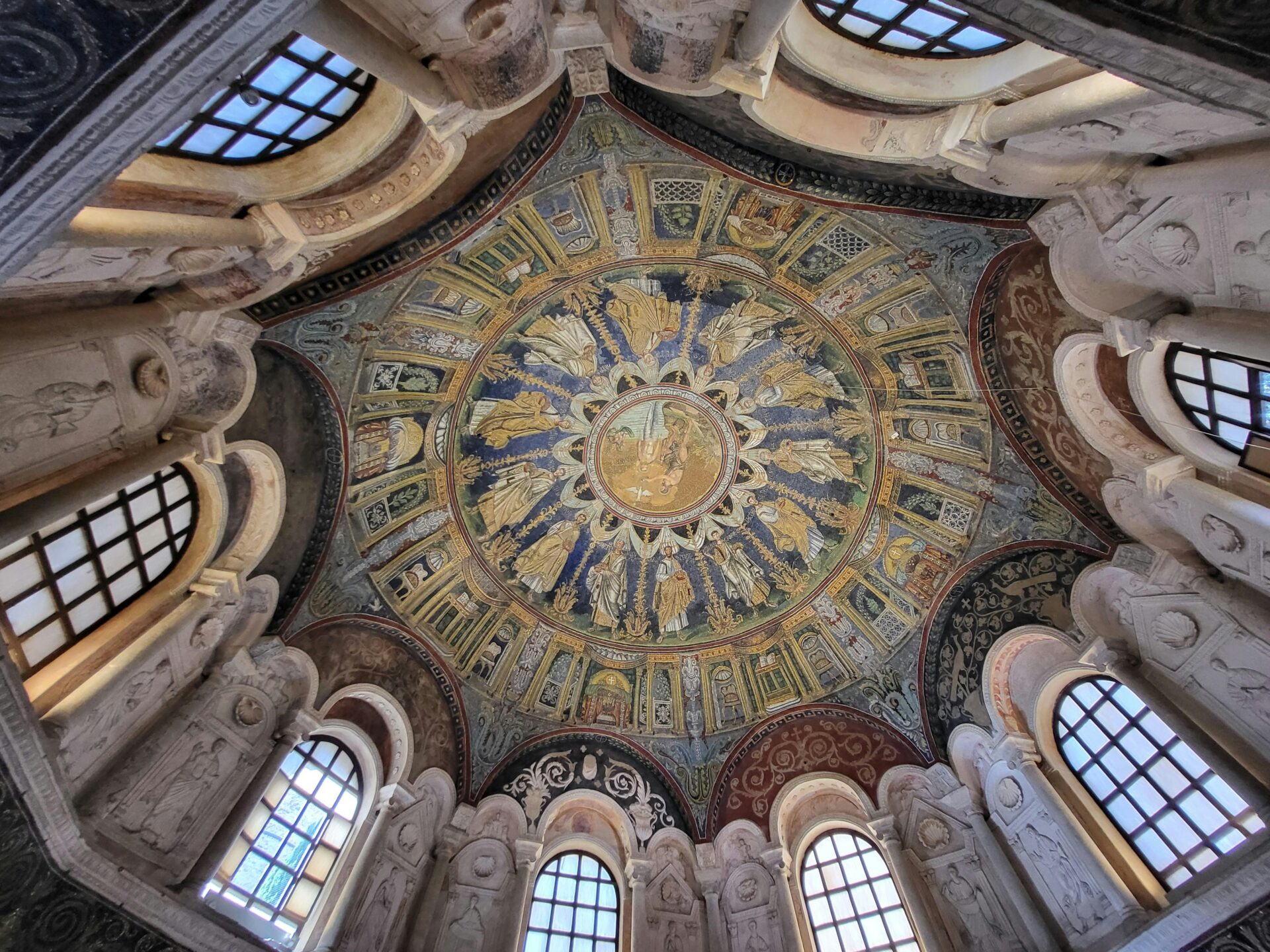
Galla Placidia’s Mausoleum: A Gem of Symbolism
Though small in size, the Mausoleum of Galla Placidia contains some of the oldest and most beautiful mosaics in Ravenna. Dating from the 5th century, this intimate space feels like stepping into a jewel box.
The star-studded blue dome immediately draws your eye upward. Each star was carefully positioned to create a perfect night sky effect. The famous “Good Shepherd” mosaic shows Christ tending his flock with remarkable tenderness.
I found the symbolic elements fascinating – doves drinking from fountains represent souls finding salvation, while the intricate vine patterns speak to eternal life. The deep blues and rich golds create a peaceful atmosphere that’s perfect for quiet contemplation.
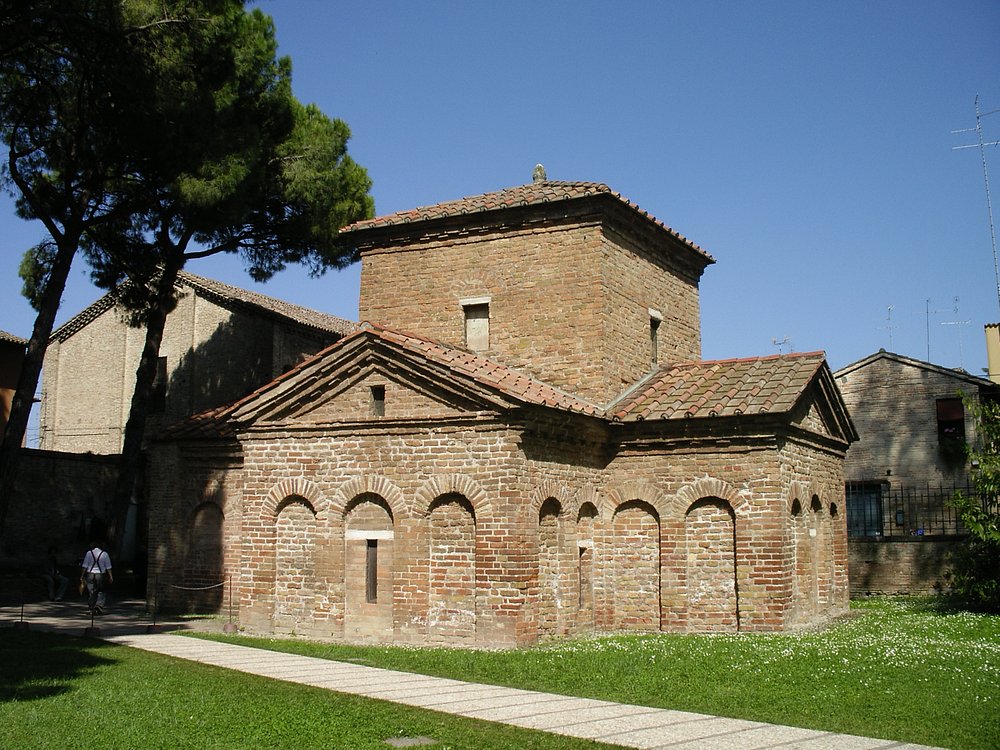
The Vivid Narratives of Theodora and Justinian
The most famous mosaics in San Vitale are undoubtedly the panels depicting Emperor Justinian I and Empress Theodora with their respective courts. These remarkable works serve as both art and historical documents.
Justinian stands regally, holding a golden paten, surrounded by officials and guards. The detail in their clothing and expressions is remarkable – I could see the individual jewels on their garments.
Opposite him, Theodora’s mosaic shows the empress in full imperial splendor. Her purple robe, elaborate crown, and confident stance reveal her power. What struck me most was how the artists captured her penetrating gaze – she seems to look directly at modern visitors across the centuries.
These panels aren’t just beautiful – they’re snapshots of Byzantine court life, preserving details about clothing, customs, and power structures from the sixth century.
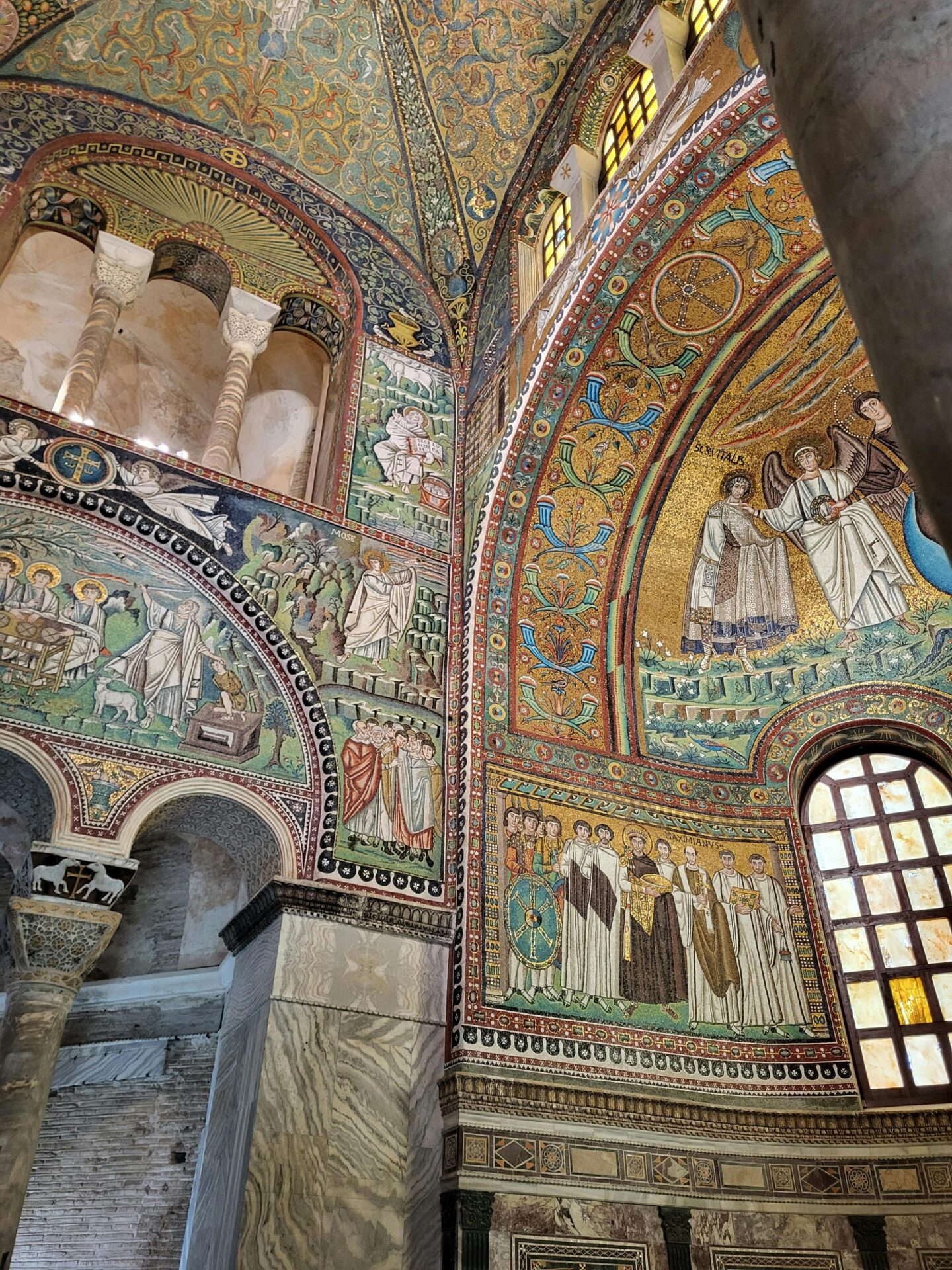
Ravenna: A Junction of Cultures
Ravenna’s unique position between East and West made it a melting pot where Roman, Byzantine, Gothic, and later Venetian influences converged. The city’s spectacular mosaics reflect this cultural fusion, showing how artistic and religious ideas flowed through this strategic port city.
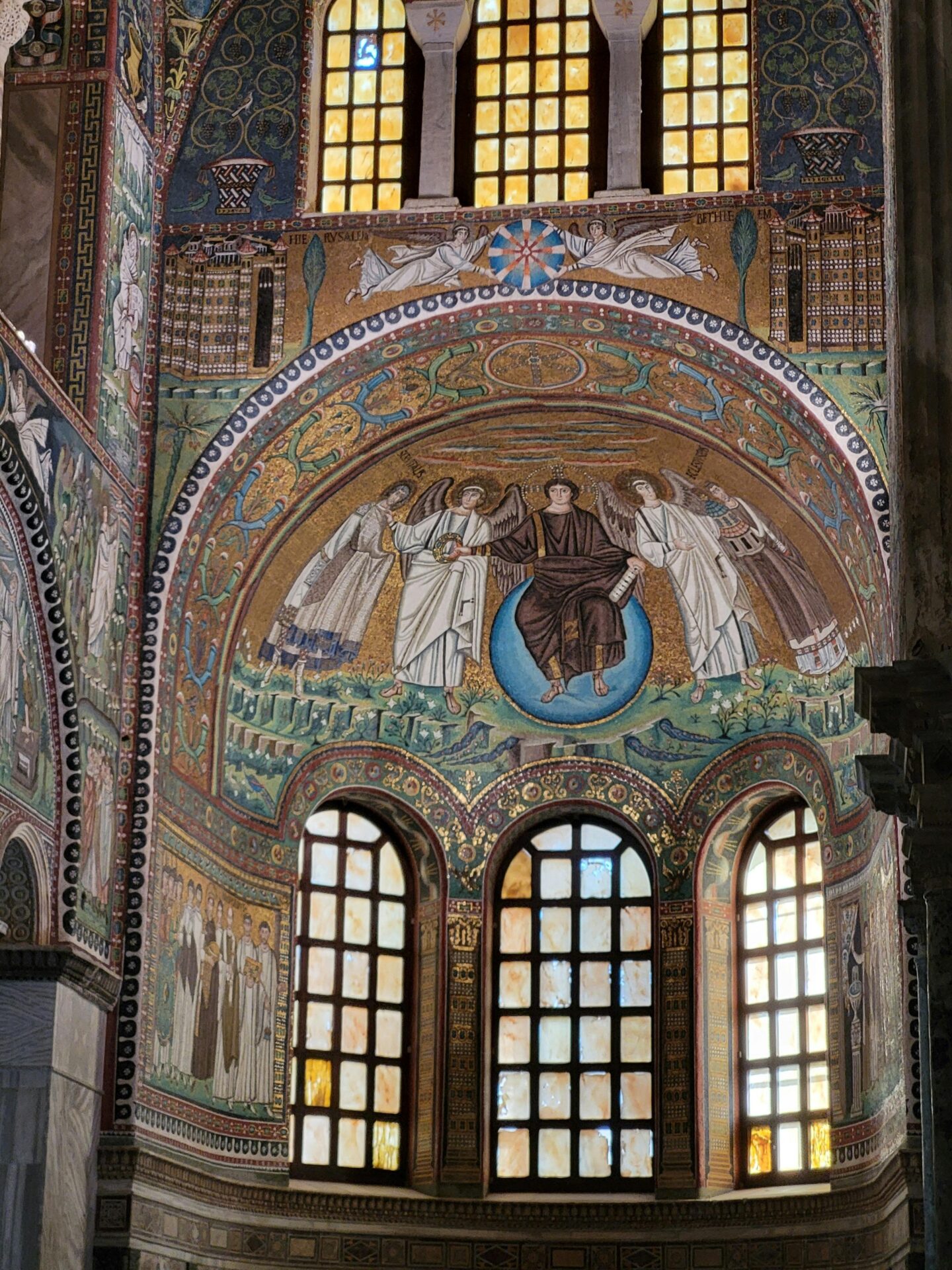
From Arianism to the Concordance of Faiths
When I walked through Ravenna’s ancient churches, I was struck by the visible theological transitions in the mosaics. The Arian Baptistery, built during Theodoric’s Ostrogoth rule in the 5th century, shows the distinctive Arian interpretation of Christianity that viewed Christ as subordinate to God.
Later, as Byzantine control strengthened, Orthodox Christianity became dominant. This shift is beautifully captured in the Basilica of San Vitale, where Emperor Justinian and Empress Theodora are immortalized in glittering tesserae.
What fascinates me most is how these competing faiths existed side by side for decades. The Arian and Orthodox baptisteries stand just blocks apart, each with their own artistic style but sharing similar symbolic elements.
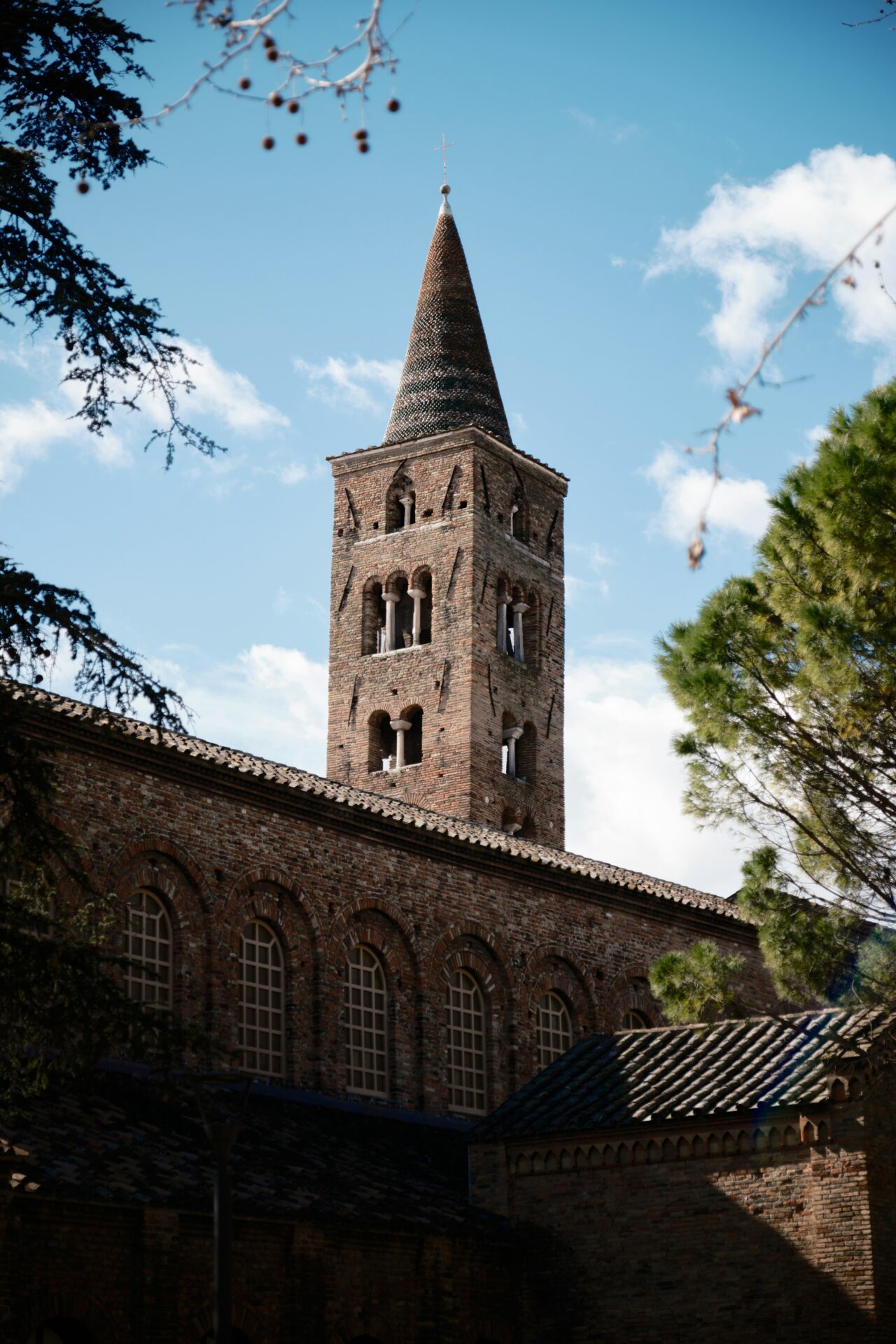
The Cultural Exchange with Venice and Dalmatia
Ravenna’s influence extended far beyond its walls. The techniques and styles developed here traveled across the Adriatic to Dalmatia and later to Venice as artists and craftsmen moved between these coastal powers.
I’ve traced these connections while exploring the Cathedral of St. Mark in Venice, where the golden mosaics clearly show Ravenna’s artistic influence. Venetian merchants frequently visited Ravenna, bringing back not just goods but artistic ideas.
The Dalmatian coast, particularly in cities like Poreč and Split, shows similar Byzantine-inspired mosaics. These artistic exchanges strengthened during the 5th-8th centuries when political alliances shifted regularly.
The shared maritime culture created a visual language that transcended political boundaries. Floral motifs, heavenly scenes, and portrait techniques moved freely between these Adriatic neighbors, creating a distinctive regional style.
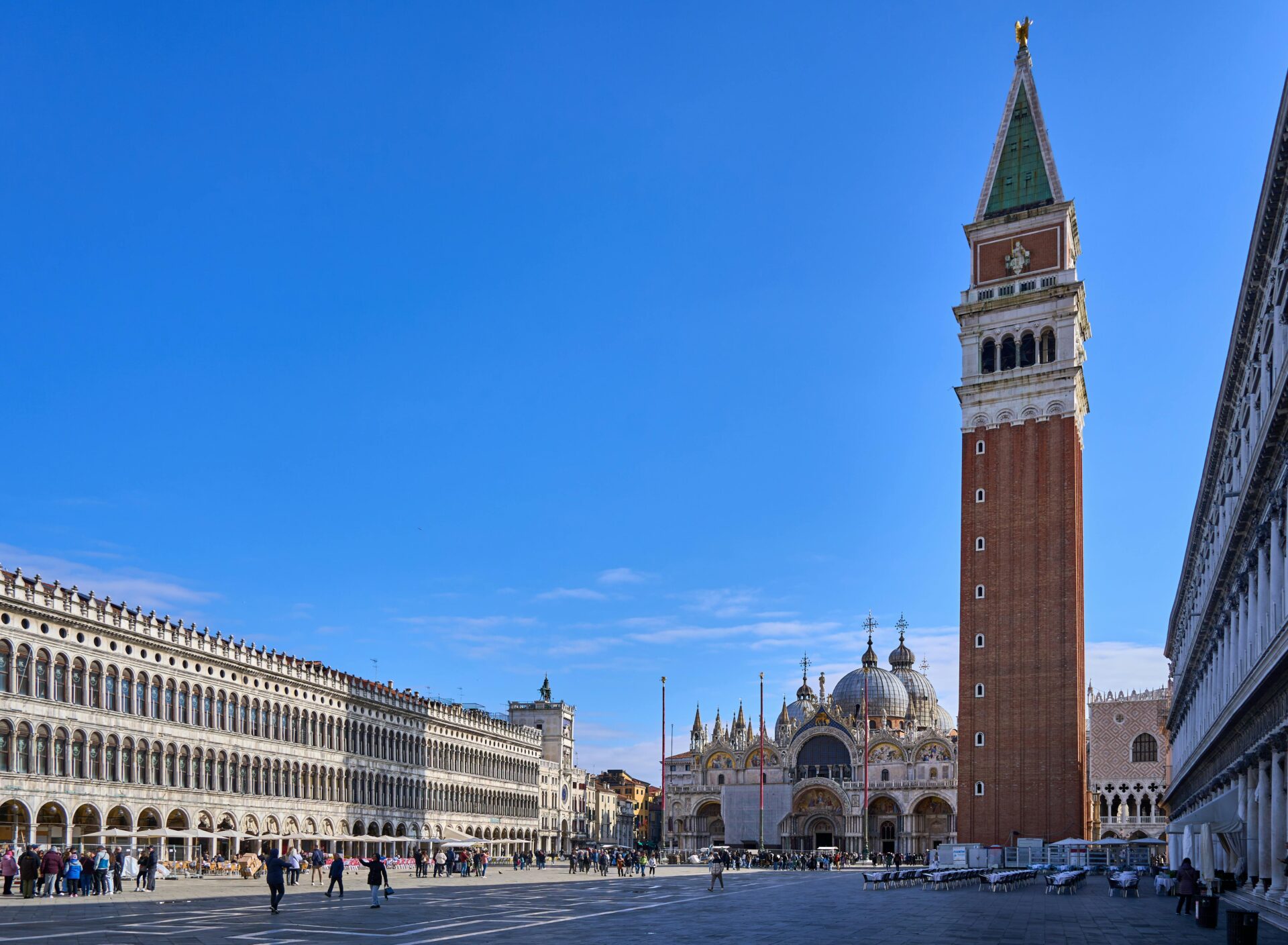
Ravenna’s Mosaic Tours and Experiences
Exploring Ravenna’s magnificent Byzantine mosaics becomes even more meaningful when you join one of the specialized tours available throughout the city. These experiences offer insights you simply can’t get wandering on your own.
Guided Mosaics Walking Tours
Walking tours in Ravenna provide the perfect introduction to the city’s UNESCO-listed treasures. I found these tours particularly valuable for understanding the intricate details that make these mosaics world-famous.
Most guided walks include visits to the major mosaic sites like San Vitale and Galla Placidia. The guides point out details I would have completely missed on my own! Tours typically last 2-3 hours and are available in multiple languages.
What I love most is how these tours often include skip-the-line access. This saved me precious time during my visit, especially in the busier summer months.
Many tours offer free cancellation up to 24 hours before they begin. This flexibility gave me peace of mind when planning my itinerary.
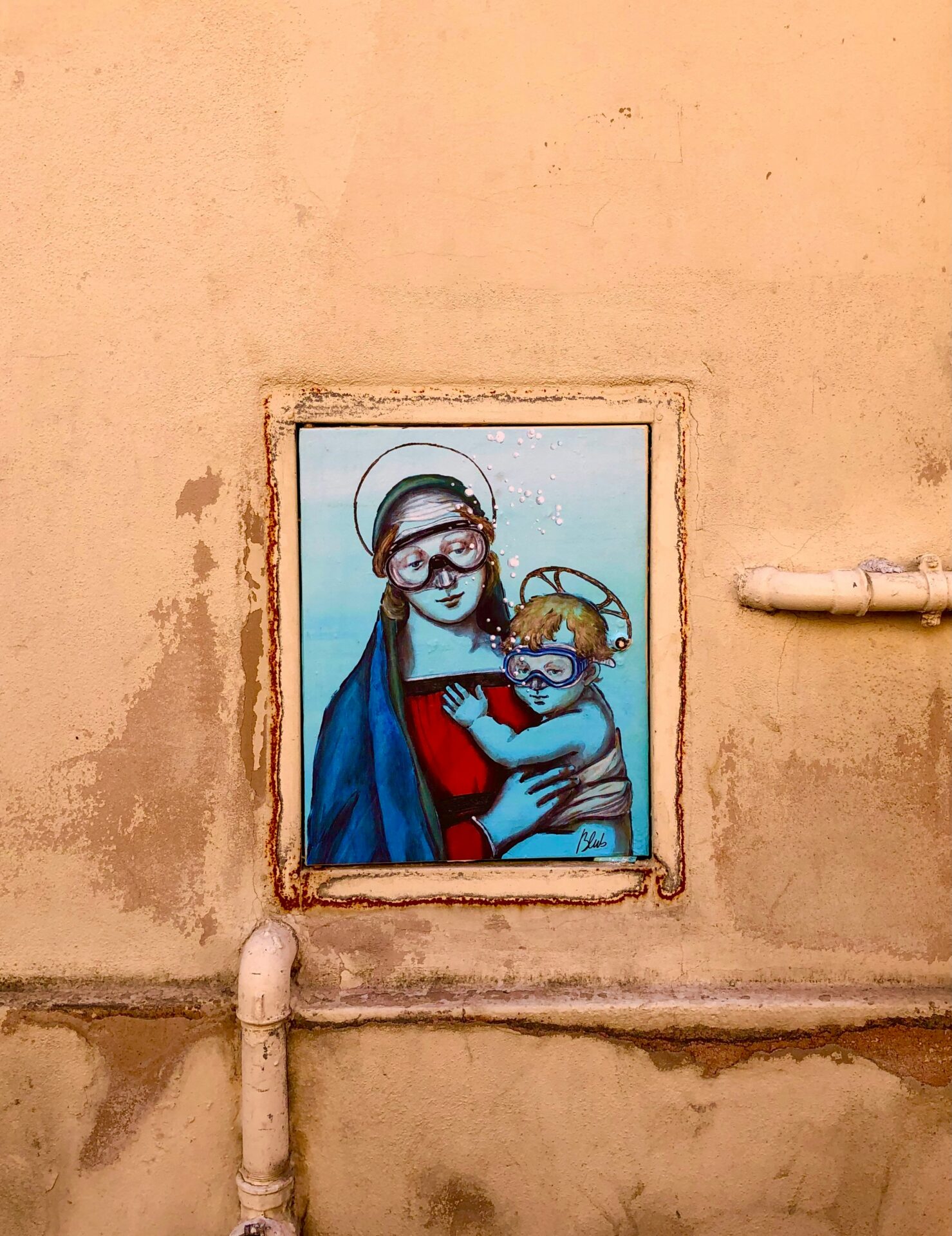
Private Tour Options for Connoisseurs
For a more personalized experience, private tours allow you to dive deeper into Ravenna’s mosaic wonders. I opted for a private guide on my second visit and was amazed at the difference it made.
Private tours can be customized to focus on your specific interests. Whether you’re fascinated by religious symbolism or artistic techniques, your guide can tailor the experience accordingly.
Some exclusive options include:
- Evening tours during “Mosaic by Night” events
- Combined tours with artisan workshop visits
- Full-day explorations with transportation included
These tours often provide access to less-visited sites that regular tourists might miss. My guide showed me hidden gems tucked away in quiet corners of the city.
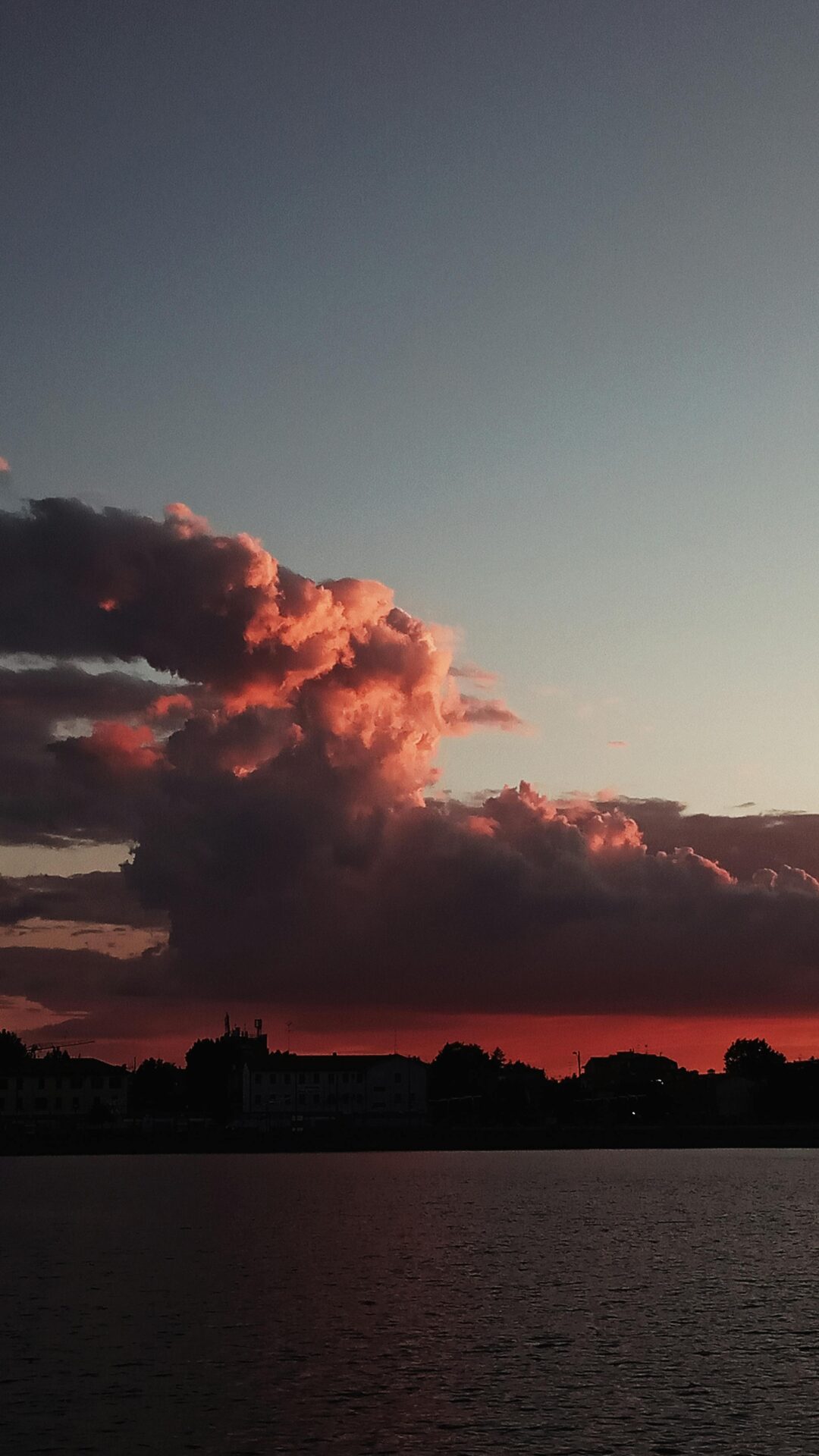
Historical Context Enhances the Experience
Understanding the Byzantine influence makes Ravenna’s mosaics come alive. The best tours I’ve taken go beyond simple descriptions to explain the historical significance of what you’re seeing.
Guides often share fascinating stories about Emperor Justinian and Empress Theodora, whose images appear in San Vitale. These human connections helped me appreciate the art on a deeper level.
Some tours incorporate visits to mosaic workshops where you can try the craft yourself. I created a small piece under expert guidance, gaining newfound respect for the ancient artisans.
The historical context provided by knowledgeable guides transforms beautiful pictures into meaningful cultural treasures. This background information helped me understand why Ravenna holds such an important place in art history.
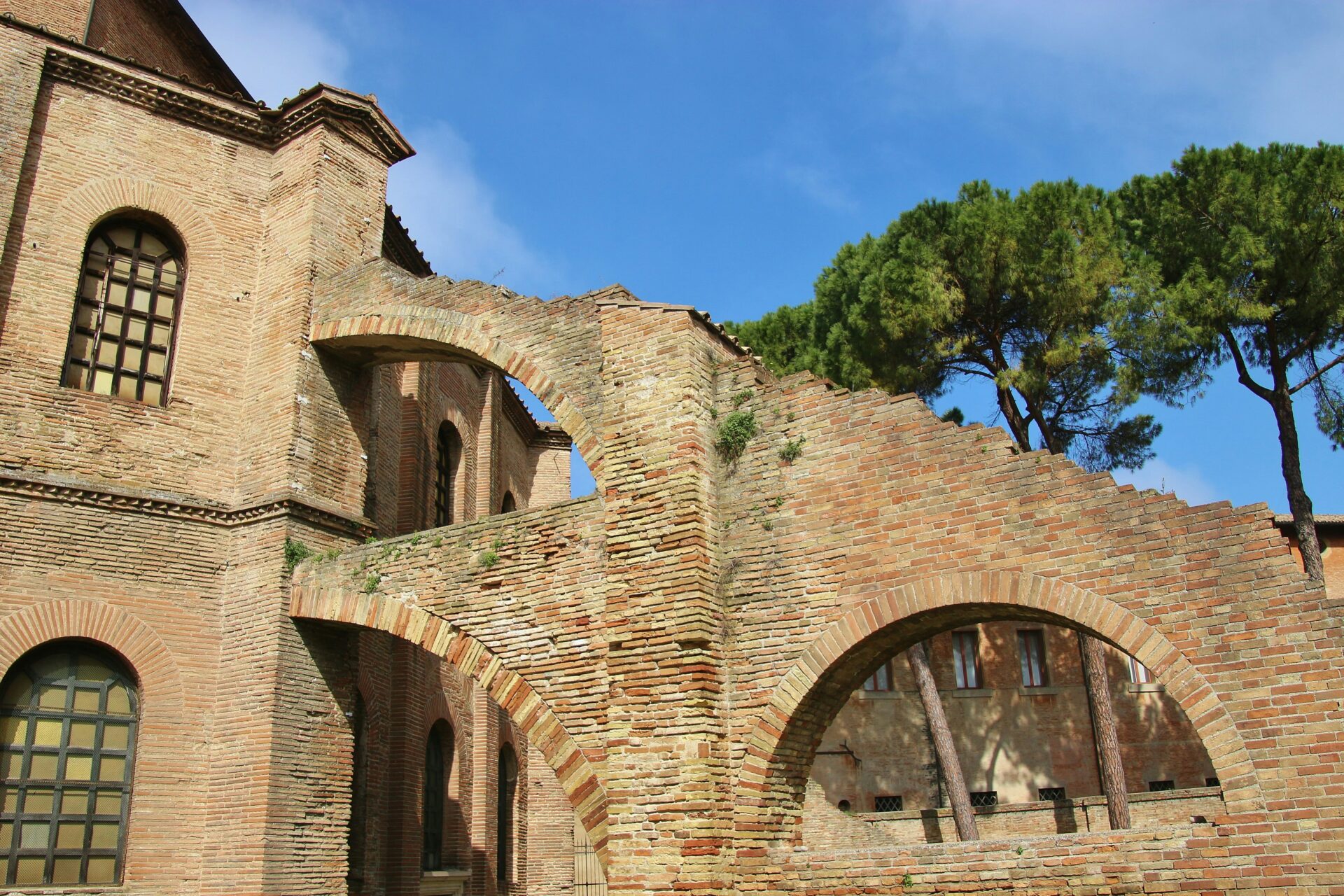
Byzantine Splendor in Modern Times
Ravenna’s Byzantine brilliance continues to echo through our contemporary world in surprising ways. The ancient mosaics’ influence extends far beyond Italy’s borders, inspiring creators and artisans across various fields.
Influence on Literature and Modern Arts
When wandering through Ravenna’s basilicas, I’m always struck by how these ancient mosaics have shaped modern artistic expression. Writers like Oscar Wilde and Ezra Pound drew direct inspiration from Ravenna’s golden treasures. Wilde even wrote a poem titled “Ravenna” after visiting the city in 1877.
Contemporary artists frequently reference Byzantine aesthetics in their work. I’ve noticed film directors like Terrence Malick and Wes Anderson using Byzantine-inspired color palettes and symmetry.
The fashion world hasn’t escaped this influence either. Designers like Dolce & Gabbana and Versace have created entire collections influenced by Byzantine mosaics, featuring gold accents and intricate patterns reminiscent of Ravenna’s walls.
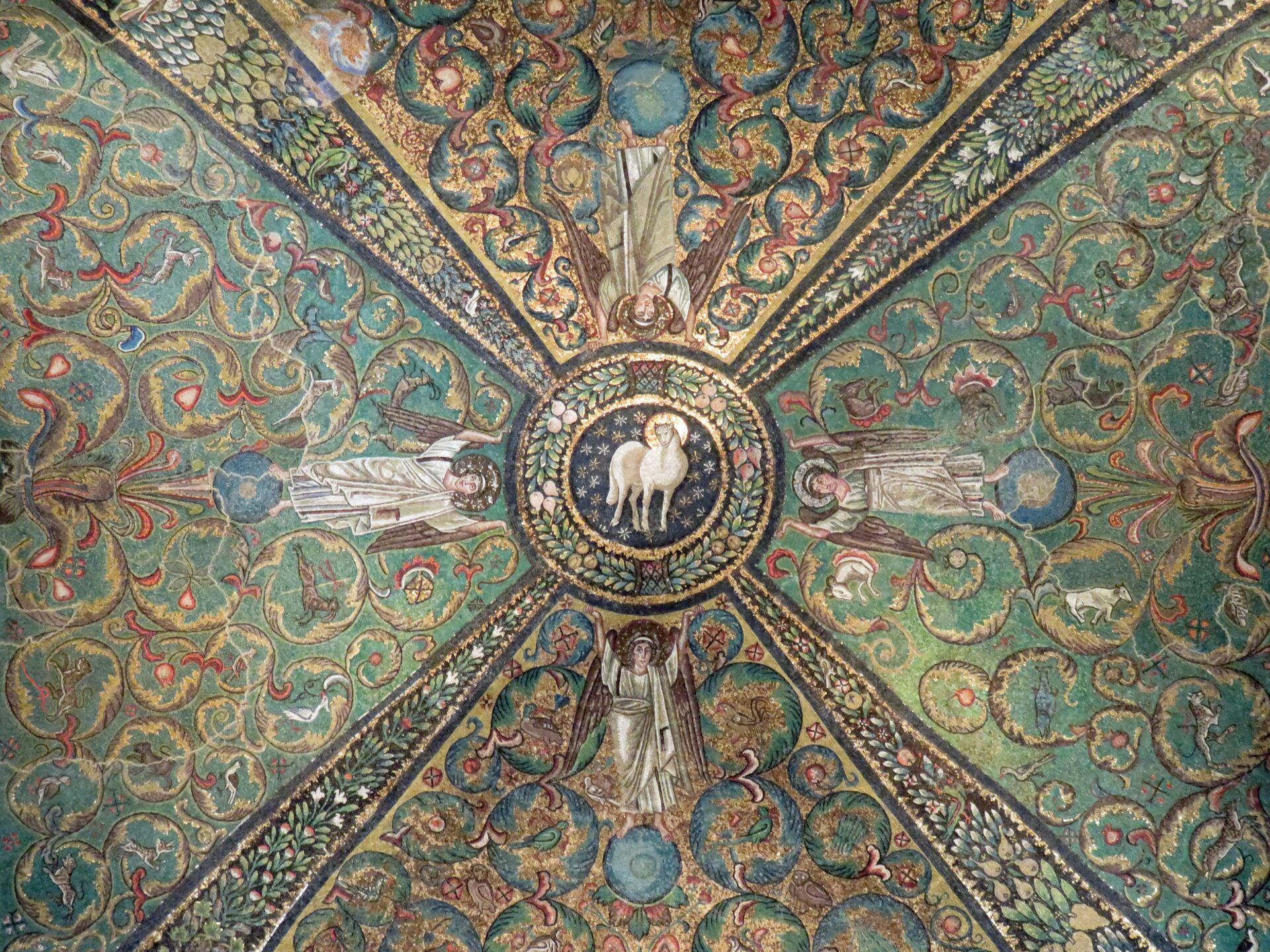
The Surviving Echoes in Luxury and Fragrance
The opulence of Byzantine culture lives on in today’s luxury market. Walking through high-end stores, I often spot the unmistakable influence of Ravenna’s golden mosaics in modern designs.
Perfumers have created fragrances directly inspired by Byzantine sensibilities. Notes of musk, frankincense, and myrrh—scents that once filled Ravenna’s basilicas—now appear in luxury perfume lines like Tom Ford’s Byzantine and Armani’s Gold Musk.
Interior designers incorporate gold leaf techniques inspired by Ravenna’s mosaics into upscale homes. I’ve visited modern hotels in Italy that feature Byzantine-inspired lobby mosaics, creating an immediate sense of sophistication and timeless elegance.
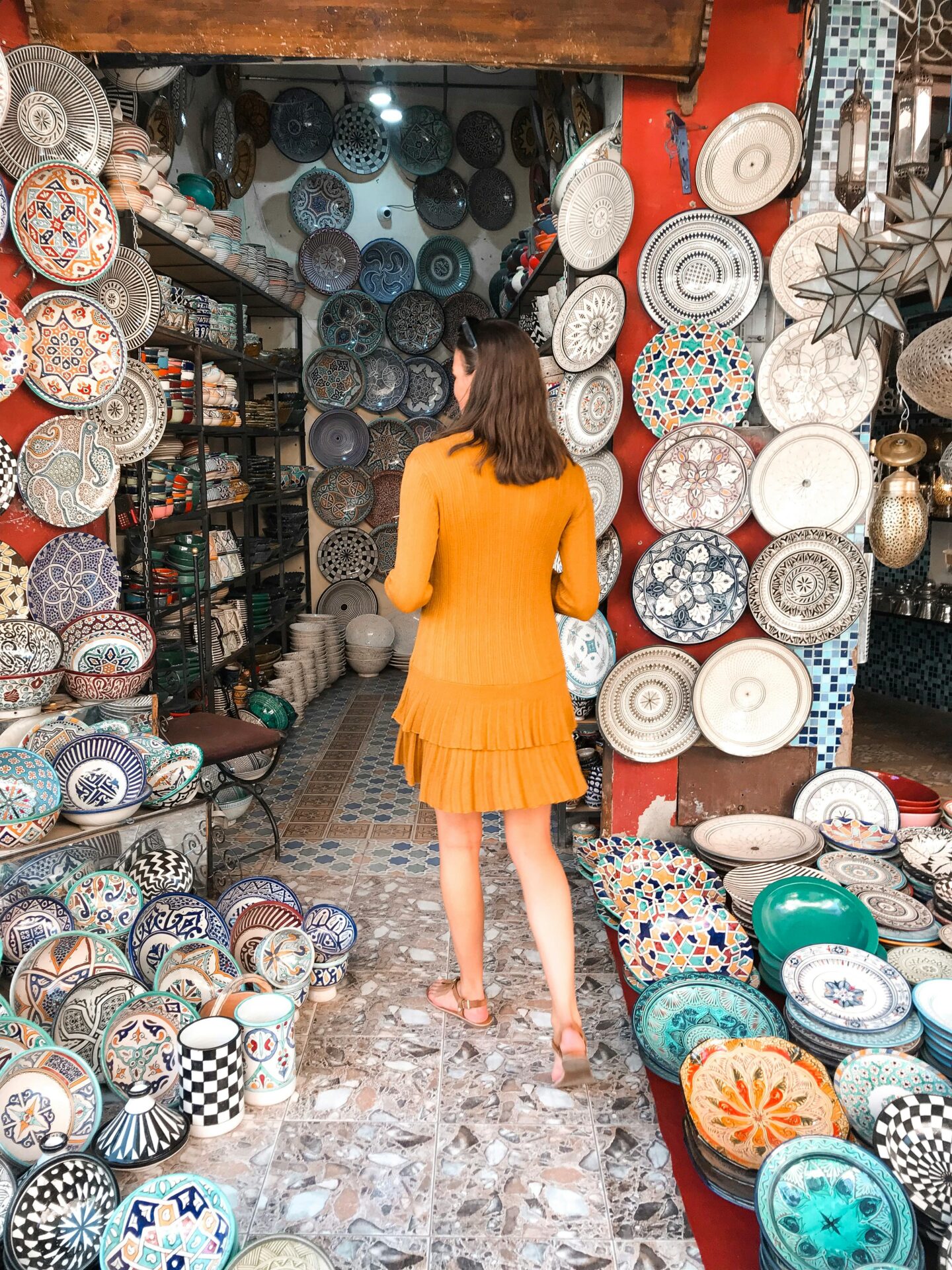
Embodying Sophistication Through Byzantine Inspired Products
My collection of Byzantine-inspired items grows with each visit to Ravenna. Local artisans create jewelry featuring mosaic techniques that mirror those in San Vitale and other basilicas. These pieces blend ancient craftsmanship with contemporary design.
Home décor has embraced Byzantine influences through:
- Mosaic tile backsplashes for kitchens and bathrooms
- Gold-accented dishware that recalls imperial luxury
- Byzantine-patterned textiles for upholstery and pillows
Museums worldwide have expanded their Byzantine collections, recognizing the enduring appeal of this aesthetic. The Metropolitan Museum of Art recently hosted a Byzantine fashion exhibition that drew record crowds.
The continued fascination with Byzantine sophistication proves these ancient artworks aren’t just historical artifacts—they’re living inspirations that continue to define our understanding of beauty and luxury.
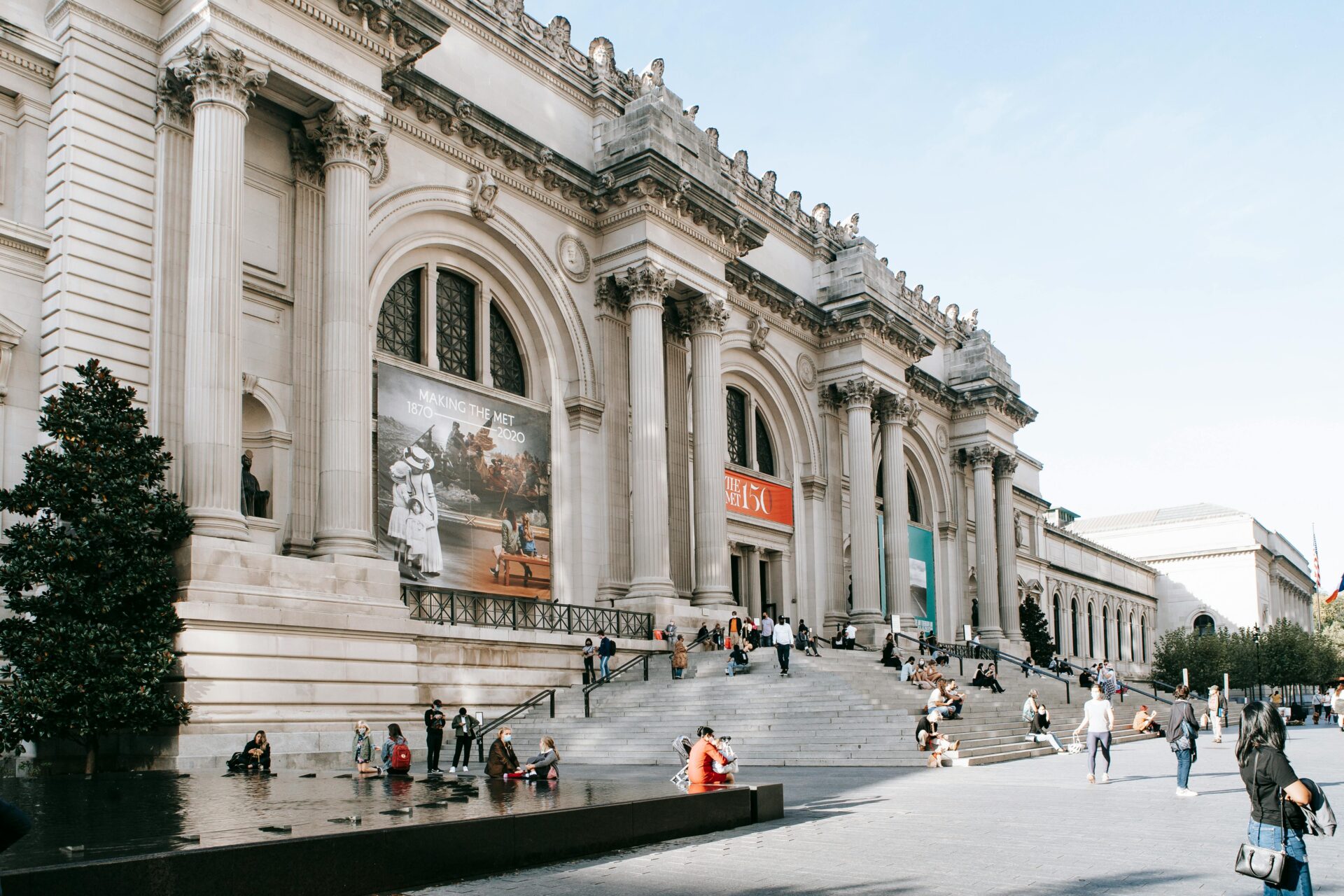
Frequently Asked Questions
Ravenna’s Byzantine mosaics spark many questions from travelers curious about their history and significance. Here are answers to some of the most common questions about these stunning artistic treasures.
Ravenna served as the last capital of the Western Roman Empire from 402 to 751 CE. This pivotal role made it a cultural and political powerhouse during the transition from Roman to Byzantine rule.
The city became a crucial connection between Eastern and Western artistic traditions. When I visit the mosaics, I’m always struck by how they represent this perfect fusion of styles.
Ravenna houses eight UNESCO World Heritage Sites containing the most complete surviving Byzantine mosaic collections outside Constantinople. These masterpieces show the height of Byzantine artistic achievement during the 5th and 6th centuries.
Emperor Justinian I dominates the famous mosaic panel in San Vitale, created around 547 CE. He stands regally dressed in imperial purple and gold, wearing a jeweled crown that catches the light beautifully.
The mosaic celebrates Justinian’s reconquest of Italy from the Ostrogoths. His central position, surrounded by soldiers, clergy, and officials, showcases his power as both military leader and religious authority.
What fascinates me most is how the artist captured Justinian’s determined expression. He looks straight ahead with intense focus, symbolizing his vision to reunite the Roman Empire under Byzantine rule.
Empress Theodora appears in a stunning mosaic panel in San Vitale, directly opposite her husband Justinian. Her story amazes me—she rose from humble beginnings as an actress to become the most powerful woman in the Byzantine Empire.
The mosaic shows Theodora wearing an elaborate crown and jewelry, with a royal purple robe. Her confident stance and direct gaze reflect her remarkable influence in imperial politics.
This representation is groundbreaking because it places a woman in a position of authority equal to the emperor. When I stand before her image, I’m reminded of her famous quote during the Nika riots: “Purple makes a fine shroud.”
Ravenna’s mosaics document the city’s transition from Roman to Ostrogothic to Byzantine rule. Each ruling power left its artistic mark, creating a visual timeline of political shifts.
The artistic styles evolve noticeably across different sites. In the Mausoleum of Galla Placidia (425 CE), I see Roman influences, while San Vitale (547 CE) displays fully developed Byzantine aesthetics.
Religious changes also appear in the mosaics. Some show a blending of Arian and Orthodox Christian imagery, reflecting Ravenna’s religious diversity during this period.
The Basilica of San Vitale houses the iconic emperor panels of Justinian and Theodora. I always recommend starting here to understand Byzantine imperial imagery at its finest.
The Mausoleum of Galla Placidia offers an intimate space with a stunning starry blue dome. The Good Shepherd mosaic inside is one of the most touching early Christian images I’ve seen.
Don’t miss the Basilica of Sant’Apollinare Nuovo with its remarkable procession of martyrs and virgins. I find myself mesmerized by the rhythmic pattern of figures against the gold background.
The mosaics use tiny glass, stone, and gold tesserae—some smaller than a fingernail. Artists arranged these pieces at slightly different angles to create a shimmering effect as viewers move through the space.
Gold tesserae were made by sandwiching gold leaf between two layers of glass. When you visit in the early morning or late afternoon, the low sunlight makes these gold backgrounds appear to glow from within.
The artists used an astonishing color palette—over 40 shades in some mosaics. They created these colors by adding minerals to the glass during production. The deep blues derived from cobalt still retain their intensity 1,500 years later.

